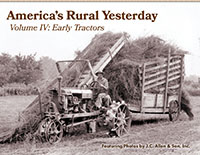Publisher's Post - June 2024


Having spent most of March and April relocating
our office, warehouse and shipping department,
buying a house, moving there, and getting our old
house ready for sale, I haven’t spent as much time
on the road as I usually do.
One of the trips I did take was to Lancaster, Penn.,
where I spent a morning with Arthur Reist, who is
the fifth generation of Reists to live at Oaklawn
Farm on Eden Road.
Arthur is an avid collector. He seeks out pieces
that tell the story of early European pioneers
settling in the eastern U.S. He has barns packed
with tools, vehicles, equipment and accessories
from several centuries ago. But even more than the
physical objects he has displayed, Arthur loves to
collect stories about them and share those stories
with others.
Visiting with him, I am perpetually having to
steer him back to the topic we’d been discussing —
whether it be horseshoeing, tobacco farming, barn
building or early masonry, for example — as he veers
away when another thought strikes him. And it can
be hard to do that corrective steering, because just
about everything he talks about is fascinating to me.
A natural-born teacher, Arthur gives tours of his
tool and antique vehicle collection to schoolchildren.
He will lift up a tool and ask “do you know what this has no idea. Then he’d demonstrate how the tool
worked. He especially likes to collect and talk about
tools designed to make other tools that then, in turn,
were used to make something else — like a barrel
stave or a wheel felloe, for instance.
I particularly enjoyed accompanying Arthur to a
few of his neighbors’ old barns. We’d be walking into
the forebay of a barn, and Arthur would spot a notch
in a wall or and explain it was to help the farmer
make the first step of a ladder, long since removed.
He’d find the remnants of a machine, buried among
other pieces of discarded lumber, pull it out and
show how it worked and, even more interesting,
how it fit into the operation of the barn system at
that particular farm.
A Rural Heritage on RFD-TV episode about Arthur
and his collection will air in September. — jm
°°°°


